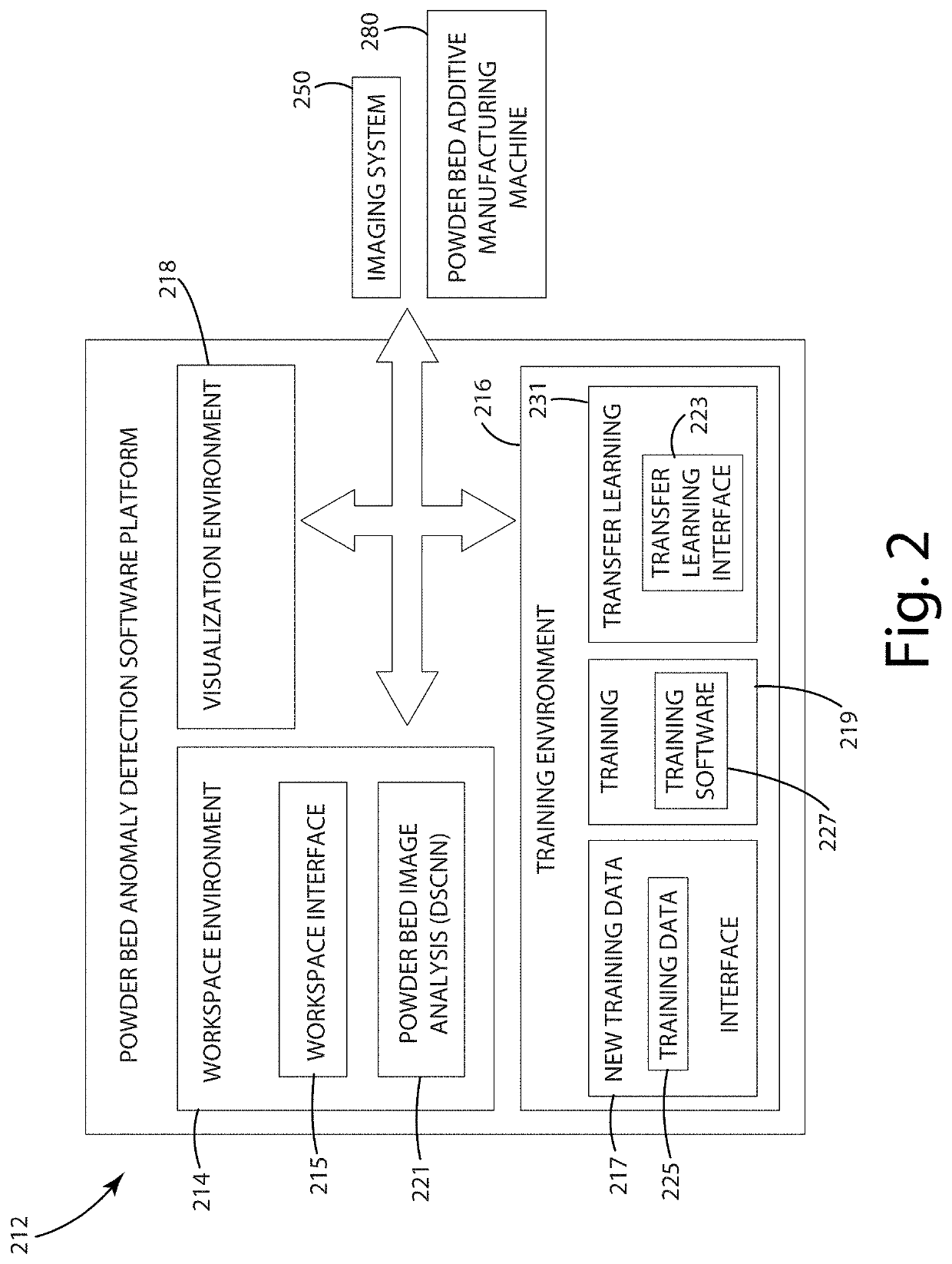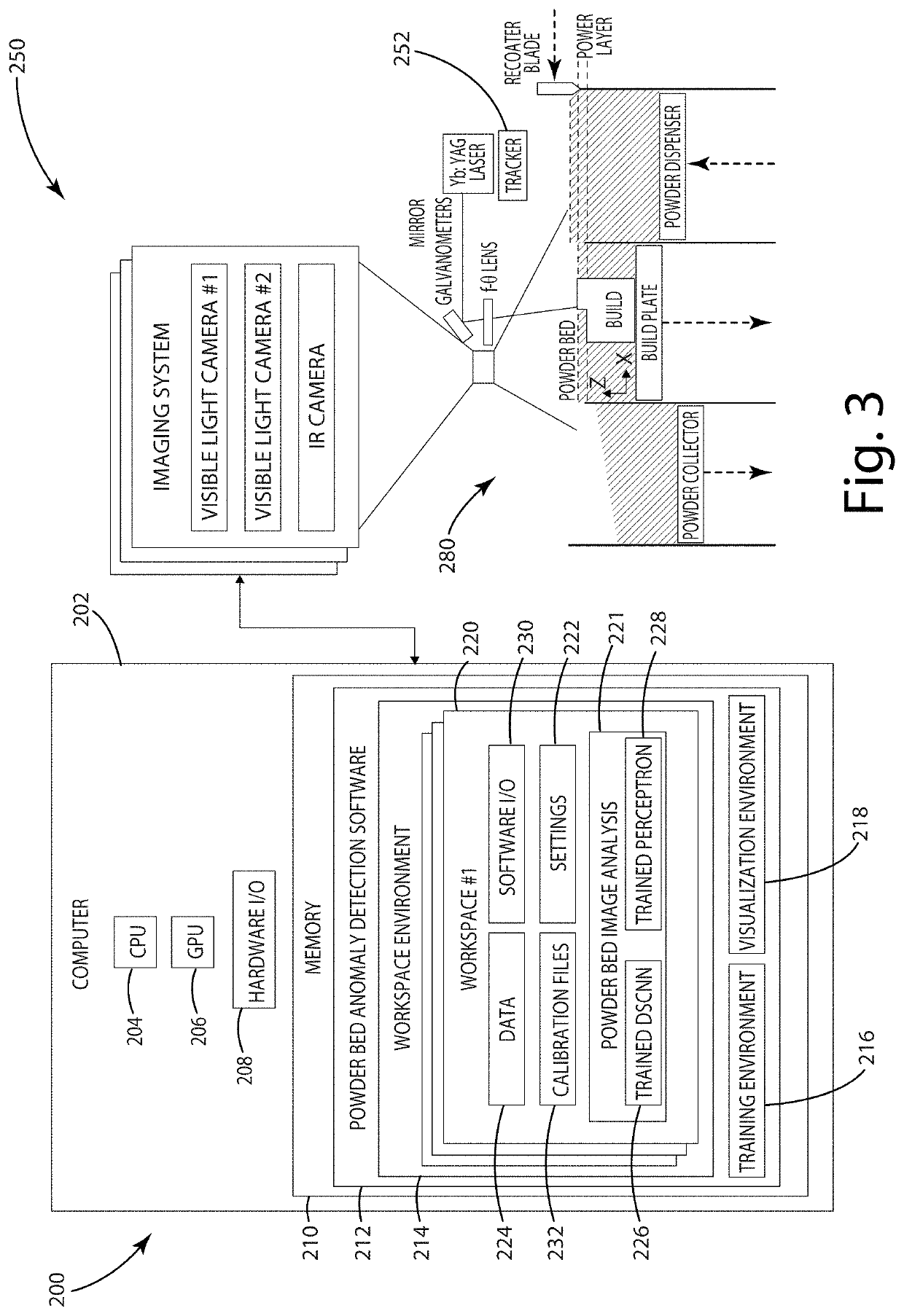Systems and methods for powder bed additive manufacturing anomaly detection
a technology of additive manufacturing and system, applied in the field of powder bed additive manufacturing anomaly detection, can solve the problems of inability to effectively analyze data, bed data sources, and inability to rely on open loop control schema and ex-situ inspection
- Summary
- Abstract
- Description
- Claims
- Application Information
AI Technical Summary
Benefits of technology
Problems solved by technology
Method used
Image
Examples
Embodiment Construction
Overview
[0021]The present disclosure is generally directed to systems and methods for analysis of powder bed additive manufacturing processes. The systems and methods of the present disclosure leverage machine learning to provide layer-wise semantic segmentation of build layers during a powder bed additive manufacturing process. Essentially, the system and method classifies pixels of an image of the build layer as belonging to a particular anomaly or being non-anomalous. Throughout this disclosure the terms segmentation and classification and derivatives thereof are used interchangeably to refer to categorizing or labeling image data, such as predicting individual image pixels or super-pixels part depicting a portion of the part additively manufactured in the powder bed, a portion of powder in the powder bed, or particular powder bed anomalies.
[0022]One aspect of the present disclosure is directed to a dynamic segmentation convolutional neural network (“DSCNN”) that provides in-situ...
PUM
| Property | Measurement | Unit |
|---|---|---|
| bit depths | aaaaa | aaaaa |
| color | aaaaa | aaaaa |
| size | aaaaa | aaaaa |
Abstract
Description
Claims
Application Information
 Login to View More
Login to View More - R&D
- Intellectual Property
- Life Sciences
- Materials
- Tech Scout
- Unparalleled Data Quality
- Higher Quality Content
- 60% Fewer Hallucinations
Browse by: Latest US Patents, China's latest patents, Technical Efficacy Thesaurus, Application Domain, Technology Topic, Popular Technical Reports.
© 2025 PatSnap. All rights reserved.Legal|Privacy policy|Modern Slavery Act Transparency Statement|Sitemap|About US| Contact US: help@patsnap.com



